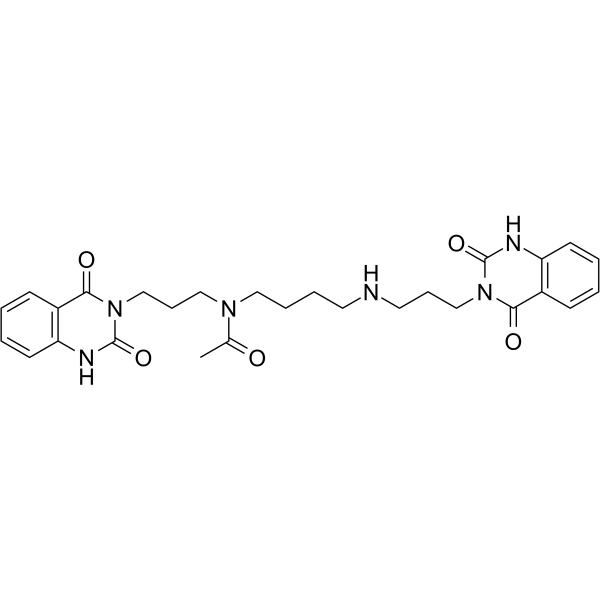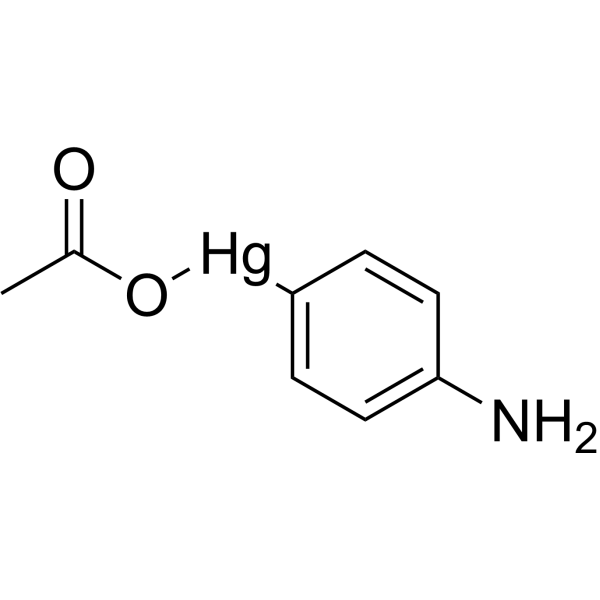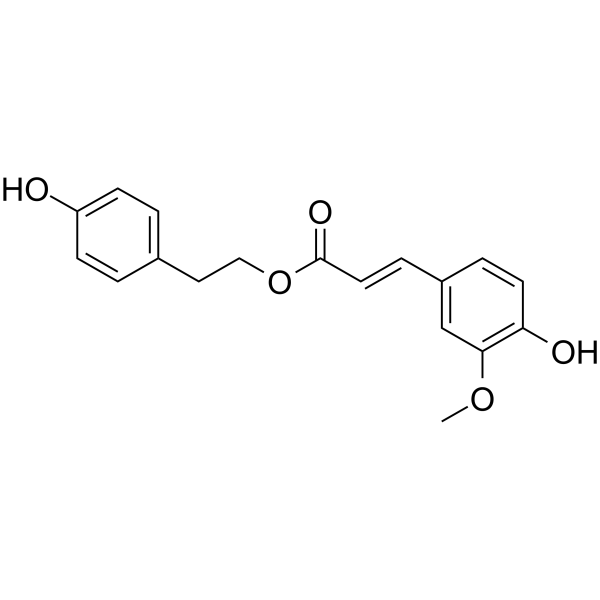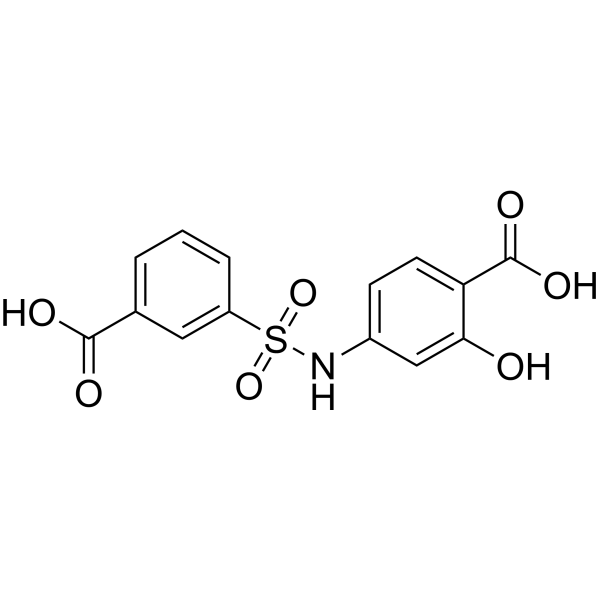Enzymes(酶)
Enzymes are very efficient and specific catalyst proteins which react with 1 or few types of substrates in biochemical reactions and are responsible for bringing about almost all of the chemical reactions in living organisms. Enzymes speed up reactions by providing an alternative reaction pathway of lower activation energy. Without enzymes, reactions take place at a rate far too slow for the pace of metabolism which means that they speed up the chemical reactions in living things.
There are 2 types of enzymes, ones that help join specific molecules together to form new molecules & others that help break specific molecules apart into separate molecules. Enzymes play many important roles ouside the cell as well. One of the best examples of this is the digestive system. For instance, it is enzymes in your digestive system that break food down in your digestive system break food down into small molecules that can be absorbed by the body. Some enzymes in your digestive system break down starch, some proteins and others break down fats. The enzymes used to digest our food are extra-cellular since they are located outside our cells & enzymes inside our cells are intra-cellular enzymes. Enzymes are used in ALL chemical reactions in living things; this includes respiration, photosynthesis, movement growth, getting rid of toxic chemicals in the liver and so on. Enzymes are proteins that must have the correct structure to be active. They are very easily affected by heat, pH and heavy metal ions.
Ribonucleoprotein enzyme catalytic activity is located in the protein part but for some the catalytic activity is in the RNA part. A catalyst is any substance which makes a chemical reaction go faster, without itself being changed. A catalyst can be used over and over again in a chemical reaction and does not get used up.
Enzymes lower the amount of activation energy needed by binding to the reactants of the reaction they catalyze, thus speed up the reaction and can process millions of molecules per second. Enzymes are typically large proteins with high molecular weight that permit reactions to go at conditions that the body can tolerate.
Enzyme nomenclature is based on what the enzyme reacts with & how it reacts along with the ending ase.
Enzymes must get over the activation energy hurdle.
Enzymes change how a reaction will proceed which reduces the activation energy and makes it faster. The more we increase the enzyme concentration the faster the reaction rate for non-catalyzed reactions. Enzymes that are catalyzed reactions also increase reaction rate at higher level of concentration but up to a certain point called Vmax which means that the enzyme has reached its maximum point. The reaction is limited by both the concentrations of the enzyme and substrate. Enzymes as catalysts take part in reactions which provide an alternative reaction pathway. Enzymes do not undergo permanent changes and remain unchanged at the end of the reaction. They only change the rate of reaction, not the position of the equilibrium.Enzymes as catalysts are highly selective by only catalysing specific reactions due to the shapes of the enzyme’s molecule.
Enzymes contain a globular protein part called apoenzyme and a non-protein part named cofactor or prosthetic group or metal-ion-activator. Changes in temperature and pH have great influence on the intra- and intermolecular bonds that hold the protein part in their secondary and tertiary structures.
Examples of cofactors are 1. Prosthetic group that are permanently bound to the enzyme. 2. Activator group which are cations (positively charged metal ions) & temporarily bind to the active site of the enzyme. 3.Coenzymes, usually vitamins or made from vitamins which are not permanently bound to the enzyme molecule, but combine with the enzyme-substrate complex temporarily. Enzymes require the presence cofactors before their catalytic activity can be exerted. This entire active complex is referred to as the holoenzyme.
Without enzymes, our guts would take weeks to digest our food, our muscles, nerves and bones would not work properly and so on…
Main Enzyme category groups:
Oxidoreductases:
All enzymes that catalyse oxido-reductions belong in this class. The substrate oxidized is regarded as a hydrogen or electron donor. The classification is based on 'donor:acceptor oxidoreductase'. The common name is 'dehydrogenase', wherever this is possible; as an alternative, 'acceptor reductase' can be used. 'Oxidase' is used only where O2 is an acceptor. Classification is difficult in some cases, because of the lack of specificity towards the acceptor.
Transferases:
Transferases are enzymes that transfer a group, for example, the methyl group or a glycosyl group, from one compound (generally regarded as donor) to another compound (generally regarded as acceptor). The classification is based on the scheme 'donor:acceptor grouptransferase'. The common names are normally formed as 'acceptor grouptransferase' or 'donor grouptransferase'. In many cases, the donor is a cofactor (coenzyme) that carries the group to be transferred. The aminotransferases constitute a special case.
Hydrolases:
These enzymes catalyse the hydrolysis of various bonds. Some of these enzymes pose problems because they have a very wide specificity, and it is not easy to decide if two preparations described by different authors are the same, or if they should be listed under different entries. While the systematic name always includes 'hydrolase', the common name is, in most cases, formed by the name of the substrate with the suffix -ase. It is understood that the name of the substrate with this suffix, and no other indicator, means a hydrolytic enzyme. It should be noted that peptidases have recommended names rather than common names.
Lyases:
Lyases are enzymes that cleave C-C, C-O, C-N and other bonds by means other than by hydrolysis or oxidation. They differ from other enzymes in that two (or more) substrates are involved in one reaction direction, but there is one compound fewer in the other direction. When acting on the single substrate, a molecule is eliminated and this generates either a new double bond or a new ring. The systematic name is formed according to 'substrate group-lyase'. In common names, expressions like decarboxylase, aldolase, etc. are used. 'Dehydratase' is used for those enzymes that eliminate water. In cases where the reverse reaction is the more important, or the only one to be demonstrated, 'synthase' may be used in the name.
Ligases:
Ligases are enzymes that catalyse the joining of two molecules with concomitant hydrolysis of the diphosphate bond in ATP or a similar triphosphate. 'Ligase' is often used for the common name, but, in a few cases, 'synthase' or 'carboxylase' is used. 'Synthetase' may be used in place of 'synthase' for enzymes in this class.
Products for Enzymes
- 41701(11)
- Activating Transcription Factor(3)
- Adenylate Kinase(10)
- AHCY(3)
- Aldolase(9)
- Asparaginase(5)
- Aurora Kinase(18)
- Beta Lactamase(3)
- Calcium and Integrin Binding(2)
- Calcium/Calmodulin-Dependent Protein Kinase(4)
- Carbonic Anhydrase(49)
- Casein Kinase(36)
- Cathepsin(52)
- Chitinase(5)
- Creatin Kinases(9)
- Cyclin(7)
- Cyclin-Dependent Kinase(18)
- Cyclophilin(23)
- Deaminase(14)
- Decarboxylase(12)
- Dehydrogenase(96)
- Discoidin Domain Receptor Tyrosine Kinase(2)
- DNA Polymerase(4)
- EGF Receptor(3)
- Endonuclease(6)
- Enolase(10)
- Enterokinase(5)
- Epimerase(3)
- Esterase(15)
- FGF Receptors(12)
- FK506 Binding Protein(10)
- Fructosamine 3 Kinase(2)
- Galactosidase(5)
- Glucosidase(32)
- Gluteradoxin(7)
- Glycogen synthase kinase(2)
- Glycosylase(10)
- Glyoxalase(3)
- Granzyme(7)
- Guanylate Kinase(2)
- Heparanase(2)
- Histone Deacetylase(3)
- Hydratase(10)
- Hydrolase(33)
- Hydroxylase(6)
- Isomerase(26)
- Jun N-terminal Kinase(1)
- Jun Proto-Oncogene(2)
- Kallikrein(26)
- Ligase(4)
- Lipase(14)
- Lipocalin(6)
- Lyase(9)
- LYVE1(3)
- Mitogen-Activated Protein Kinase(16)
- MMP(68)
- Mutase(11)
- Natural Enzymes(4)
- Nuclease(18)
- Nucleotidase(4)
- Nudix Type Motif(11)
- Other Enzymes(63)
- Oxidase(23)
- Oxygenase(12)
- Paraoxonase(3)
- Peptidase(41)
- Peroxiredoxin(10)
- Phosphatase(150)
- Phosphorylase(9)
- PI3-kinase(5)
- Polymerase(13)
- PPARG(2)
- Protease(15)
- Proteasome(54)
- Protein Kinase Akt1/PKB alpha(4)
- Protein Kinase-A(7)
- Protein Kinase-C(3)
- Protein Kinases(86)
- Protein Tyrosine Phosphatase(10)
- Reductase(60)
- Secreted Phospholipase A2(10)
- Serine Threonine Kinase(4)
- Sulfatase(8)
- Synthase(23)
- Synthetase(33)
- TGFBR(3)
- TGM2(3)
- TIMP(10)
- TPA(4)
- Transferase(156)
- Tyrosine Kinase(9)
- Ubiquitin Conjugating Enzyme(39)
- Uromodulin(4)
- VEGF Receptors(14)
- Transaminase(19)
- Hexokinase(6)
- TIE1(6)
- Cat.No. 产品名称 Information
-
GC69633
Orobol
Orobol 是一种主要的大豆异黄酮,具有多种药理活性,包括抗皮肤老化和抗肥胖作用。Orobol 抑制 CK1ε、VEGFR2、MAP4K5、MNK1、MUSK、TOPK 和 TNIK (IC50=1.24-4.45 μM)。Orobol 还抑制 PI3K 亚型 (对于 PI3K α/β/γ/K/δ,IC50=3.46-5.27μM)。

-
GP22037
OSGEP Human
O-Sialoglycoprotein Endopeptidase Human Recombinant

-
GC63132
Otaplimastat
SP-8203
Otaplimastat (SP-8203) 是一种基质金属蛋白酶 (MMP) 抑制剂,以竞争方式阻断 NMDA 受体介导的兴奋性毒性。Otaplimastat 还具有抗氧化活性。Otaplimastat 可用于脑缺血损伤的研究。
-
GP22038
OTC Human
Ornithine Carbamoyltransferase Human Recombinant

-
GP22039
OXSM Human
3-Oxoacyl-ACP Synthase, Mitochondrial Human Recombinant

-
GC69651
p-Aminophenylmercuric acetate
APMA
p-Aminophenylmercuric acetate 是一种有机汞基质金属蛋白酶 (MMP) 激活剂。p-Aminophenylmercuric acetate 通过攻击蛋白质巯基或诱导半胱氨酸转换反应,参与 MMP-8 的激活和抑制。p-Aminophenylmercuric acetate 促进了 β 纤维素素前体 (pro-BTC) 脱落。p-Aminophenylmercuric acetate 影响阿片类受体与其激动剂和拮抗剂的结合。

-
GC91296
p-Carboxyphenyl Sulfate
Benzoic Acid-4-sulfate, 4-Carboxyphenyl Sulfate, para-Carboxyphenyl Sulfate, 4-Hydroxybenzoic Acid Sulfate, p-Hydroxybenzoic Acid Sulfate, para-Hydroxybenzoic Acid Sulfate
一种硫酸化的酚酸。

-
GC65271
p-Hydroxyphenethyl trans-ferulate
p-Hydroxyphenethyl trans-ferulate 具有抗高血糖 (酵母α-葡萄糖苷酶,IC50 19.24 ± 1.73 µmol L-1),抗氧化,抗炎活性。p-Hydroxyphenethyl trans-ferulate 具有抗癌活性和血清素能活性。

-
GP22570
p16-INK4a Human
Cyclin-Dependent Kinase Inhibitor 2A Human Recombinant

-
GP22571
p16-INK4a Human, TAT
Cyclin-Dependent Kinase Inhibitor 2A Human Recombinant, TAT

-
GP22572
p38a/SAPK2 Human
p38a/SAPK2 Human Recombinant

-
GP22040
P4HB Human
Prolyl 4-Hydroxylase Beta Human Recombinant

-
GP22041
P4HB Human, Active
Prolyl 4-Hydroxylase Beta Human Recombinant, Active

-
GP22042
P4HB Mouse
Prolyl 4-Hydroxylase Beta Mouse Recombinant

-
GP22428
p85a Bovine
Phosphoinositide 3-kinase a, regulatory subunit Bovine Recombinant

-
GP22043
PAFAH1B3 Human
Platelet-activating Factor Acetylhydrolase 1b, Catalytic Subunit 3 Human Recombinant

-
GP22044
PAFAH2 Human
Platelet-Activating Factor Acetylhydrolase 2 Human Recombinant

-
GP22045
PAICS Human
Phosphoribosylaminoimidazole Carboxylase Human Recombinant

-
GP22573
PAK4 Human
p21 Activated Kinase 4 Human Recombinant

-
GC38995
Panasenoside
人参黄酮苷
Panasenoside 是一种从 Lilium pumilum D. C 分离的类黄酮。 Panasenoside 具有 α-葡萄糖苷酶 (α-glucosidase) 抑制活性。
-
GP26171
PAP Human
Human Prostate Acid Phosphatase produced in Pooled human seminal fluid having a molecular mass of approximately 100kD

-
GP22046
PAPP A Human
Pregnancy-Associated Plasma Protein-1 Human Recombinant

-
GP22047
PAPSS1 Human
3'-Phosphoadenosine 5'-Phosphosulfate Synthase 1 Human Recombinant

-
GP22048
PARP1 Human
Poly (ADP-Ribose) Polymerase 1 Human Recombinant

-
GP22049
PARP2 Human
Poly (ADP-Ribose) Polymerase 2 Human Recombinant

-
GP22574
PBK Human
PDZ Binding Kinase Human Recombinant

-
GP22050
PCBD1 Human
Pterin-4-Alpha-Carbinolamine Dehydratase Human Recombinant

-
GP22575
PCK1 Human
Phosphoenolpyruvate Carboxykinase 1 Human Recombinant

-
GP22051
PCMT1 Human
Protein-L-Isoaspartate O-Methyltransferase Human Recombinant

-
GP22052
PCOLCE Human
Procollagen C-Endopeptidase Enhancer Human Recombinant

-
GP22053
PCOLCE Human, Sf9
Procollagen C-Endopeptidase Enhancer Human Recombinant, Sf9

-
GP22054
PCYT2 Human
Phosphate Cytidylyltransferase 2 Human Recombinant

-
GP22055
PDE6D Human
Phosphodiesterase 6D cGMP-Specific Rod Delta Human Recombinant

-
GP22056
PDE6H Human
Phosphodiesterase 6H cGMP-Specific Cone Gamma Human Recombinant

-
GP22057
PDHX Human
Pyruvate Dehydrogenase Complex, Component X Human Recombinant

-
GP22058
PDI Human
Protein Disulfide Isomerase Human Recombinant

-
GP22059
PDIA3 Human
Protein Disulfide Isomerase A3 Human Recombinant

-
GP22060
PDIA3 Human, Active
Protein Disulfide Isomerase A3 Human Recombinant, Active

-
GP22061
PDIA3 Mouse
Protein Disulfide Isomerase A3 Mouse Recombinant

-
GP22062
PDIA4 Human
Protein Disulfide Isomerase A4 Human Recombinant

-
GP22063
PDIA4 Human, Active
Protein Disulfide Isomerase A4 Human Recombinant, Active

-
GP22064
PDIA6 Human
Protein Disulfide Isomerase A6 Human Recombinant

-
GP22065
PDIA6 Human, Active
Protein Disulfide Isomerase A6 Human Recombinant, Active

-
GP22576
PDK1 Human
Pyruvate Dehydrogenase Kinase Isozyme 1 Human Recombinant

-
GP22577
PDXK Human
Pyridoxal Kinase Human Recombinant

-
GP22066
PDXP Human
Pyridoxal Phosphatase Human Recombinant

-
GP22067
PECI Human
Peroxisomal D3,D2-Enoyl-CoA Isomerase Human Recombinant

-
GP22068
PECR Human
Peroxisomal Trans-2-enoyl-CoA Reductase Human Recombinant

-
GP22069
PEPD Human
Peptidase D Human Recombinant

-
GC71216
PFKFB3-IN-2
PFKFB3-IN-2是一种6-磷酸果糖-2-激酶/果糖-2,6-二磷酸酶3 (PFKFB3)抑制剂。





